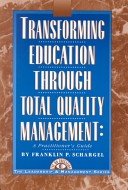Today 15.4 percent of our K-12 students fail to graduate – increasing the likelihood of their imprisonment, single parenthood, poverty, collecting welfare, the use of alcohol and drugs, placing an increased burden on our nation’s resources.
Today 1.2 million students drop out of school every year. That equals one student dropout every 26 seconds or 7,000 a day enough to fill one school bus loaded with children leaving schools every school day never to return.
Yet the increased demands of Federal and states will inevitably increase the likelihood of children leaving school prior to graduation.
According to the Huffington Post, over 80 percent of all prisons are filled with school dropouts.
The National Dropout Prevention Center developed 15 effective strategies which are data-driven, research-based and field tested in schools across the nation.
The 15 Effective Strategies should be used as a foundation for dropout prevention efforts. The strategies have been recognized by the National Education Goals Panel and the United States Department of Education as the most “effective strategies to help solve our school dropout problem.”
Aiming to impart why education is important, here are some of the favorite resources dealing with the prevention of students dropping out of school.
Table of Contents
- 1. Transforming Education Through Total Quality Management: A Practitioner’s Guide by Franklin P. Schargel
- 2. Reaching the Wounded Student by Joe Hendershott
- 3. Turning High-Poverty Schools into High-Performing Schools by William H. Parrett and Kathleen M. Budge
- 4. Helping Students Graduate: A Strategic Approach to Dropout Prevention by Dr. Jay Smink & Franklin P. Schargel
- 5. From At-Risk to Academic Excellence: What Successful Leaders Do by Franklin P. Schargel, Tony Thacker and John S. Bell
- 6. Creating School Cultures That Embrace Learning: What Successful Leaders Do by Tony Thacker, John S. Bell and Franklin P. Schargel
- 7. Schools Where Teachers Lead: What Successful Leaders Do by John S. Bell, Tony Thacker and Franklin P. Schargel
- 8. At-Risk Students: Reaching and Teaching Them by Jonas Cox and Richard Sagor
- 9. Improving Student Learning: Applying Deming’s Quality Principals in Classrooms by Lee Jenkins
- 10. Dropout Prevention Tools by Franklin P. Schargel
- 11. 152 Ways to Keep Students in School: Effective, Easy-To-Implement Tips for Teachers by Franklin P. Schargel
- 12. Creating Safe Schools: A Guide for School Leaders, Teachers, Counselors, and Parents by Franklin P. Schargel
Mr. Schargel took a Title 1 high school in New York City and using Quality Management Techniques, lowered the school’s dropout rate from 21.9 percent to 2.1 percent, increased family engagement 88 percent and sent 72.1 percent of the school’s graduates to post-secondary schools.
This author of this book gives strategies and ideas to educators who work with wounded students– students who are beyond the point of “at-risk” and who suffer from hopelessness.
It shows teachers and principals how to understand, teach, discipline, and motivate these students.
3. Turning High-Poverty Schools into High-Performing Schools by William H. Parrett and Kathleen M. Budge
The authors contend that high poverty schools need not be high dropout schools. Parrett and Budge support the idea that schools can be turned around by:
- Building leadership capacity.
- Fostering healthy environments.
- Improving the system.
They suggest that leaders and teachers develop plans to change the fundamentals of the school.
Using the 15 Effective strategies as a base, the book identifies techniques and strategies on how to implement them.
The following three books should be viewed as a single entity. The author’s content is that the 15 strategies effectiveness will be enhanced by visionary, empowering leadership, school cultures which are not toxic to students, student learning, parents and staff, and schools where teachers lead.
Related: Best Books for Teachers on the Edge of Burnout
I would recommend this book to any educator involved with helping at-risk youth. The book identifies the struggles faced by the at-risk child and their family.
Dr. Jenkins, a former school superintendent in California, applied quality management techniques in his district. The book supplies techniques to collect data and how to use them in school classrooms.
This book presents over 70 tools, resources, and worksheets that have been used in schools across the country.
It comes with a CD-ROM so that the tools can be customized to fit the individual school’s context and enable schools to customize the worksheets.
The book is divided into four sections -Student Learning, Professional Growth, Family and Community Involvement and Safe Schools.
Student, parents and school staff deserve a safe, learning environment. Yet recent headlines of school shootings, bullying, and drug use have shown the vulnerability of schools.
The book is filled with strategies and tools to address school safety issues.
In today’s volatile society, students and their parents seek safe learning environments. If they do not find them, the students may leave school.











